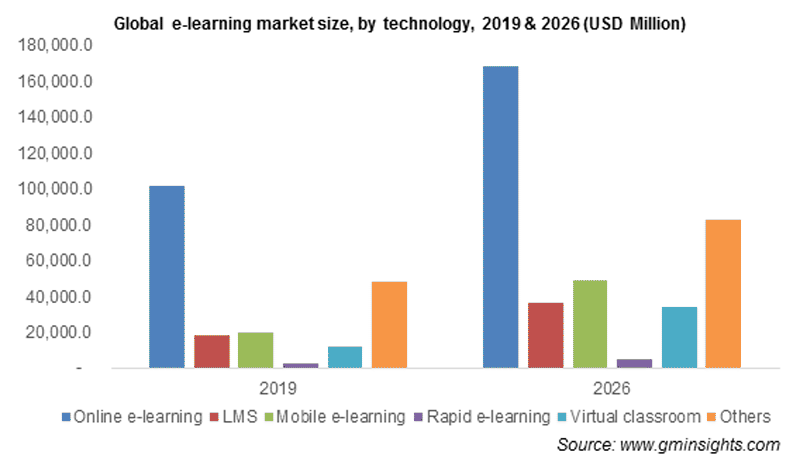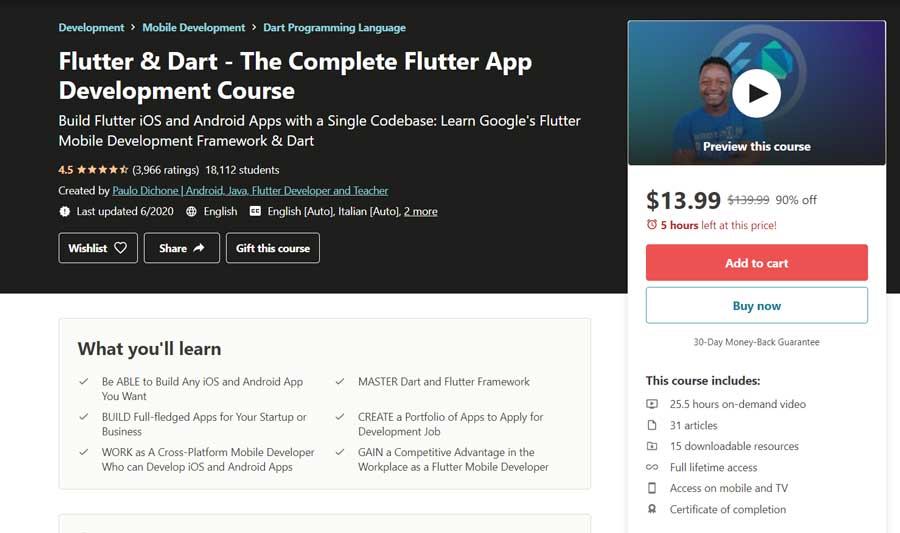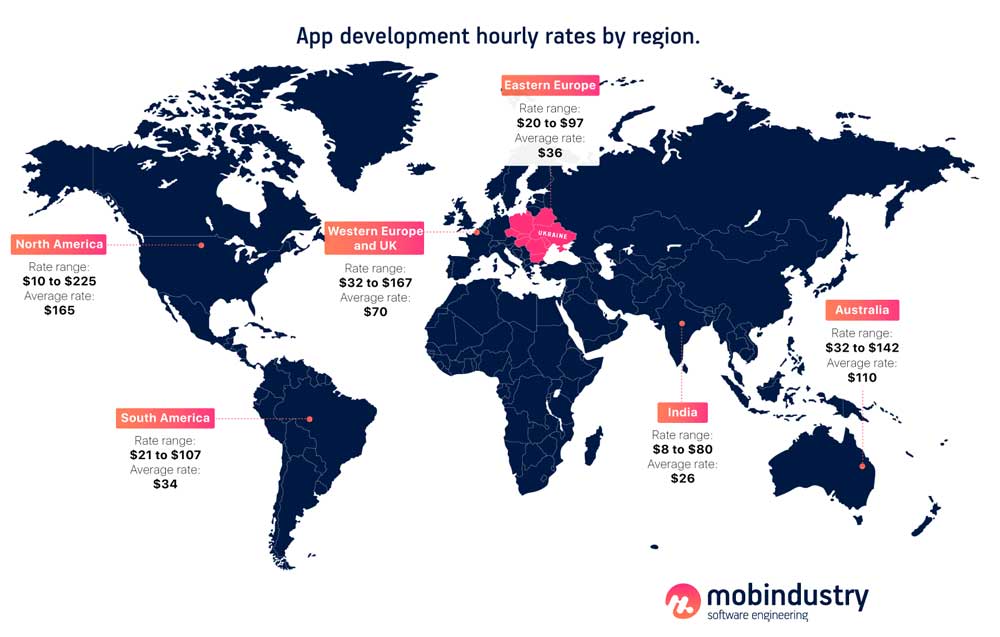How to Create a Video-Based Learning Platform Like Udemy
Online learning has been gaining popularity in the past 10 years, but the pandemic has caused a boom in this industry. Video based learning benefits students, schools, and individuals who want to learn or pass on their expertise. Learn how to start an online learning platform of your own
Online learning platforms: market overview
According to Global Market Insights, the global EdTech market will be worth $375 billion by 2026. As demand during the pandemic grows, these numbers may change dramatically: lots of people are now thinking about changing careers and moving their work and studies online.

The pandemic has influenced the education market: Top universities are offering more free courses online, private and public schools are moving their classes online and building virtual classrooms, and individual experts are releasing more educational content on elearning platforms like Udemy.
There are lots of elearning products on the market. Mobile apps like DuoLingo help people learn languages through quizzes. There are also learning management systems, virtual classrooms, and other solutions. However, in this article, I’ll be talking specifically about video-based learning. Why?
Video is the most consumable content format on the internet. Every day, users watch 22 billion videos on social media platforms and websites. Over 75% of video content is viewed on mobile devices.
Videos attract traffic and increase the time spent on a page. Solely video-based products like TikTok have proven that video is currently the most demanded format.
Learning through videos is also popular, as most people digest information best when it’s presented visually. One of the most popular online video learning platforms, Udemy, currently has 50 million users and offers over 150,000 courses in 50 languages. The business model of Udemy is based on selling separate courses and sharing the revenue with their creators. Other popular video lesson platforms include:
- Udacity
- Coursera
- DataCamp
- edX
- LinkedIn Learning
- Skillshare
As you can see, this market already has strong players, and this means only one thing: demand is high, but there’s still room for learning platforms with new and creative approaches.
How to create an online education website like Udemy or other popular video-based learning platforms? Let’s explore.
5 steps to developing a video-based e-learning platform
Building an elearning platform is a challenging task, as the competition is already big. In this guide, I’ll show you how to build an online learning platform that will attract users and generate revenue.
Step 1: Know your user
Elearning benefits different groups of users, from middle school students to employees and people looking for new career opportunities. Research the market and figure out the main groups of users who will gain knowledge on your platform.
This will help you to design your product and market it after the release. To get to know your users, create a user portrait and empathize with your users. For example, if you want to create a learning management system for corporate education, find out what employees seek when they need to learn new skills to advance their careers.
Communicate with your target users, find out what they’re currently using, and most importantly, find out what they don’t like. Use this information to create a vision for your product.
Step 2: Define your vision
You should explain your product vision to your development team, designers, and investors. Your vision allows you to focus on what your product should look like and what main functionality it should have.
If you’ve never created a software product for education, it’s a good idea to talk about your vision with software development experts who can translate your ideas into concrete functional requirements using best practices.
At Mobindustry, we call this process the discovery stage. During this stage, our experts perform market research and competitor analysis. They also interview you to compile all your product requirements.
Step 3: Develop a business plan
After you have a clear understanding of what your product will look like and who your target audience is, it’s time to develop a business plan. It’s a good idea to create both optimistic and pessimistic plans. Both of these should include:
- Estimated development time and costs
- Costs of all third-party services
- Recurring costs for hosting, servers, domain names, and app developer accounts
- Marketing costs
- Expected number of users in the first week, month, year, 2 years, and 5 years
- Monetization model
- Expected revenue
- Expected income
This plan will allow you to plan your budget and project future revenue. Now that you have your budget figured out, you need to search for someone who will develop your platform.
Step 4: Find a reliable development team
You have several options for developing your platform: You can create an in-house development team or outsource development to an existing development team at a software development company. Creating an in-house team is typically a long and costly process, as you need to assess candidates, pay for HR services, create a work environment for your employees, and offer a salary and bonuses that compete with local companies.
Startups that need to launch their products as soon as possible usually opt for outsourcing to a country with a lower cost of living, as it’s a fast way to get the best talent and save money for marketing.
For developing a video-based elearning platform, you’ll need web and mobile developers. Which exactly and how many depends on the technology stack you choose.
A software development vendor can help you choose the best technologies for your platform and also help you in all stages of development, from planning and design to deployment and release.
Step 5: Make a detailed development plan
Your software development vendor should help you with this step. A business analyst can help you create a technical specification: a detailed description of your whole project, its features, the technology stack, the team members and stakeholders who will be involved in the project, and so on. A technical specification also often includes wireframes and design concepts.
Developing a technical specification requires communication between you and your development team, and you should approve each step of the process.
After the detailed development plan is ready, it’s time to start building your platform.
Step 6: Develop an MVP
Developing a video-based learning platform is a large endeavor, and such platforms have lots of features that are absolutely necessary to make a product competitive. Because the competition is fierce, startups often choose to add special features that will make their products stand out.
However, it’s also important to release a platform as soon as possible. For this, you and your team should analyze the complete list of features and decide which you’re going to develop first.
After the release, you can continue adding features and changing them according to market demands.
Step 7: Analyze and improve your product
Now that your platform is live, it’s time to gain users and get feedback. To do that, you need to implement analytics in both your app and website and track user activity. What features do your visitors use most? How do they find your platform?
To be successful, your products should constantly evolve, so grab that backlog you formed after extracting the features for your MVP and start gradually implementing them.
Change your product as needed and add some killer features that will make your video-based learning platform stand out.
Let’s now discuss the technologies and must-have features for your platform.
How to choose a tech stack for your platform
Your software development vendor will likely offer you several technology options for each element of your platform infrastructure. For a video-based platform, you’ll need an efficient, resilient, and scalable technology stack, as videos are quite heavy and require fast processing.
Your platform will likely consist of a:
- Back end
- Front end
- Mobile client
Back end
For the back end, you can choose PHP (a time-proven technology) or Python, which is more productive and modern. Both of these languages are great for building reliable back ends.
There are, of course, other options — for example, Node.js or Go — and the choice of your backend tech stack will depend on your team members’ skills. However, PHP and Python are the most popular go-to options for video-based platforms.
When it comes to databases, I’d advise you to combine a couple of databases for different purposes. For example, choose MongoDB for data that needs to be changed dynamically and couple it with MySQL.
Front end
For your website, you’ll need a classic frontend technology stack: JavaScript, HTML5, and CSS3 along with AngularJS. This is a great solution for an elearning platform, and you’ll have no issues finding developers for these technologies.
Mobile app
Because people commonly watch videos on smartphones, your platform will definitely need to be present on Android and iOS.
For this, you basically have two options: You can develop a separate nativ app for each platform, or you can create one cross-platform app that will work on both Android and iOS. If you need to save development time and your budget, a cross-platform app is definitely your choice.

The best cross-platform technologies currently are React Native and Flutter. We advise using Flutter for elearning platforms, as the result is closer to a native app and you can actually use Flutter on any platform by using a shared codebase. Also, Flutter’s performance is very close to that of native languages, so you won’t sacrifice quality.
Must-have features of an elearning platform
Search, filters, and categories
All features that will help your users find the courses they need should be easy to use and access on your website and in your app. Use category trees and filters to help your users find courses without knowing course titles, or offer predictive search that will lead users directly to what they need.

Recommendations
A recommendations feature should be situated on the main screen of your platform and demonstrate the top courses. To make the recommendation feature effective, you need to implement a machine learning algorithm that will gather information on user behavior and suggest the most relevant courses according to users’ interests.
Personal profiles
A personal profile should contain information about a user, the courses they’ve liked and purchased, their progress in these courses, and also their payment methods and payment history.
Dashboard
A dashboard should show all courses a user is currently enrolled in and allow the user to continue courses right where they left off. On the dashboard, a user should also be able to check course statuses and progress.
Your tutors will also need a dashboard that will show them insights on their students’ activity: the number of students enrolled, active students, etc.
Course page
A course page should tell a user everything about a course: the tutor, length, content, expected results, required skill level, and, most importantly, reviews.

Often, course descriptions also include an introduction video where a tutor gives users an idea what the course is about.
Reviews
Reviews are one of the most important factors that users will take into account when choosing a course. You should encourage users to leave reviews as they go through a course and once they’ve completed it.
It’s a common practice to combine reviews with star ratings. You can showcase ratings on course pages and in thumbnails.
Course creation
This feature allows tutors to create courses and upload materials including videos and PDFs. Course creation should be intuitive and easy. Make sure to support the whole process with useful guides for tutors and give tips on how to create a great course.
You’ll also need to include interactive elements (questionnaires, quizzes, exams) that allow tutors to communicate with their students.
Notifications
Remind your users to complete courses, inform them of new courses or discounts on their favorite courses, and promote your new services and features using notifications. Notifications are most effective on mobile devices, though you can implement them on your website as well.
To increase the open rate, you may want to implement rich push notifications that contain media like images or GIFs.
Payment gateway
You can choose various monetization models for your service. Usually, video-based learning platforms offer paid courses and allow users to purchase courses separately. Some platforms are subscription-based. In any case, you’ll need to integrate a payment gateway to easily receive payments.
Here are some of the most popular payment gateways:
- PayPal
- Stripe
- Braintree
- Google Pay
- Apple Pay
The choice of payment gateway should depend on your target region, the number of payment options provided, and your specific needs.
Video player
This is the most important feature in your service, as all courses will be video-based. You need to make sure your video player supports all modern video formats like HLS and Dash but also works with classic file formats such as MP4.
You should also be able to style your video player with CSS to make sure it matches your website or app design. Make sure to test your video player in all browsers and on all operating systems to make sure your audience can access videos from anywhere.
Admin panel
This is your tool to control your platform. An admin panel allows you to make changes to your website and app content, send push notifications, support your users, and see insights on how people use your service.
These are all the must-have features for your online learning platform MVP. If you want to do something extra, you should add more advanced features.
Killer features for your elearning platform
Modern technologies allow businesses to offer impeccable service and use the wow effect to attract new users. How to create an online learning platform that will sweep both users and investors off their feet? Here are the features you can implement to outcompete other online learning platforms.
Augmented and virtual reality
This is a great feature for your elearning platform. Give teachers the ability to visualize their material with the help of augmented reality. With this technology, you can create virtual whiteboards that will bring a real classroom experience to your students.

Video streaming
Video streaming is a more advanced way of teaching. Allow teachers to stream their lessons in real time and thus communicate effectively with students. Implement live chat right next to a video so a tutor can immediately answer questions.
Text and video chat
This feature can help tutors take a personalized approach to teaching. For example, tutors can offer one-on-one lessons through video chats and encourage students to work together and build a community in text chats and forums, where they’ll be able to discuss their homework in a group.
Gamification
Make the learning experience more exciting and engaging with gamification. People love to compete and reach new levels, so you can implement a gamification system in your platform to encourage users to complete a course and do all the assignments.
You can also give tutors the opportunity to gamify their courses with flashcards, fun quizzes, and the ability to give students awards.
How much does it cost to create a video-based elearning platform?
The cost of creating an elearning platform depends on lots of factors:
- Platform size and feature scope
- Design complexity
- Number of platforms
- Cost of third-party services
- Cost of maintenance
- Technology stack (native or cross-platform)
- Hourly rate of your development team
The hourly rate of a development team is the key factor that influences the final cost, as development costs can vary as much as sixfold across countries. For example, a platform developed in the US that costs $300,000 will cost around $90,000 in Ukraine without any difference in the final product’s quality.

To get a detailed estimate of your project, contact us: We’ll make a development plan for your elearning platform and give you a detailed cost and time estimate.
Final thoughts
Video is the most consumable type of media on the internet, and the best video learning platforms use video as their primary way to share knowledge are extremely successful. In this day and age, online education is more important than ever, and you can build an online learning platform as a successful and meaningful video-based education business.
In this article, I’ve provided you with information that will help you create a website like Udemy or any other successful video-based learning platform.
Video is the most consumable type of media on the internet
To overcome the competition, you may want to add cutting-edge technology that will enhance your learners’ experience and help learners overcome the challenges of remote and self-guided learning.
If you want to create your own e-learning platform for all platforms and screens, make sure to contact us. We’ll provide you with full-cycle development services, from planning to deployment and maintenance.

